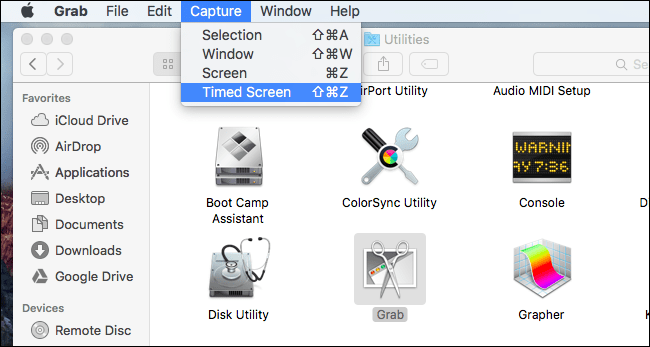고정 헤더 영역
상세 컨텐츠
본문


How to Take a Screenshot and Record Your Screen on Mac. Use the Snipping Tool method to capture a screenshot. Use snipping tool to capture screenshots. With Capto, you can choose from a variety of different options to screen grab on Mac. Like most default apps, QuickTime is free and easy to use. You can also. Snipping tools are neat little apps that allow you to take screenshots of any aspect of your Mac desktop including active windows. If you don’t just want to capture the whole screen but want to focus on one part of the desktop, this is the tool you need. I discussed and find Mac users requirement for use snipping tools for differing work like photo editing, content marketing, Professional Developers and Business users. Today’s we have the verity of free and pro function software for capture screen on windows quickly and share, save on cloud or local Mac computer. Alternatives to Snipping Tool for Windows, Mac, Linux, Chrome, Firefox and more. Filter by license to discover only free or Open Source alternatives. This list contains a total of 25+ apps similar to Snipping Tool. You can use Snipping Tool to capture a screen shot, or snip, of any object on your. Before you reach for shift + command + 4, consider a mac snipping tool equivalent that saves time without having to open a new window or app. Read more here.
17 Snipping Tool Alternatives & Similar Software
Greenshot
MWSnap
FastStone Capture
Shutter
Snagit
Free Snipping Tool App
ShareX
PicPick
Jing
Lightshot
Screenshot Captor
Screenpresso
Skitch
WinSnap
DemoBuilder

SimpleScreenRecorder

Lightscreen
oCam
More About Snipping Tool
Snipping Tool is the integrated screenshot taking the application in the Windows operating systems that automatically installed in the system during the installation of the Windows. This feature of Windows is available in almost all versions of the Windows operating systems. Snipping Tool allows the users of Windows to take the snap of any part of the opened program in the Windows easily. It can be used for performing some basic image editing functions as well as highlighting any specific part of the screenshot taken by the users. The other best thing about Snipping Tool is that it enables the users to save the image taken in various image and photo formats as well. The main advantage of using the Snipping Tool is that instead of taking the screenshot of the opened program by itself, Snipping Tool gives the users an opportunity to select their own the part of the program they want to take the snap. The types of snaps available in the Snipping Tool are the free-form snip, rectangular snip, window snip and full-screen snip. All these formats of Snipping Tool provide the users with the best options of taking the screenshots.
When you need to share something from the computer screen, then you can use many tools. But, you may have to download the third party app and go through a few steps for its setup. However, a snipping tool allows you do more apart from capturing the screen. You would find this tool in Windows Vista and higher versions.
Check Also:5 Best Screenshot Extensions for Google Chrome
Steps for Using the Windows Snipping Tool
Step 1: Click ‘Start’ present towards the left hand bottom most corner of the screen.
Step 2: Type ‘Snipping Tool’ in the search box and then click on the result. You may also think about right-clicking on the result to ‘Pin to the Start Menu’ for future access.
Step 3: Once you have launched the tool, go to ‘Options’ and ensure that the boxes, ‘Always copy snips to the Clipboard’,’ Include URL below snips (HTML only)’,’ Prompt to save snips before exiting’ and ‘Show screen overlay when Snipping Tool is active’ are checked.
Step 4: To take a screenshot, you need to click ‘New’. You can also select one of the options displayed in the drop down menu from the arrowhead.
Free-form Snip – This snip aids you to draw any sort of shape and capture the screen accordingly.
Rectangular Snip – This snip helps you to select the content in form of a rectangle.
Window Snip – This snip allows you to capture any open window that’s visible on the screen. This means even that you can take a screenshot of portions within the screen size.
Full-screen Snip – This snip facilitates you take screenshots of the entire computer screen. The feature is useful when you need to capture content from different monitors.
Step 5: Once you have taken the screenshot, you can click on the ‘Save’ option and thereby select the location for storing image.
How to Take a Delayed Screenshot with Windows Snipping Tool?
When Windows 10 was released, additional features were added to the Snipping tool. Apart from everything else, you can set the time for capturing the screen. Simply click ‘Delay’ to select the time from 0 to 5. The digit denoted the time interval between the time you click ‘New’ and the actual time when the screenshot is taken.
How to Use a Snipping Tool for Mac?
Besides pressing a few keys at one instance, it’s easier to take screenshots in Mac with utilities. Here’s what you need to follow. Do note that the Grab tool serves as a snipping tool in Mac OS X.
Step 1: Go to the Grab tool in Applications. Follow the path ‘Applications >> Utilities >> Grab’
Snipping Tool For Mac
Step 2: Once you click ‘Capture’ you need to select one of the options in the drop down menu.
Selection – This option refers to selecting a particular area on the screen.
Window – This can be used to snip a window that’s open on the screen.
Screen – Use this option if you need to capture the entire display.
Timed Screen – This lets you capture after a delayed time interval of 10 seconds.
Step 3: Select the area with the help of a crosshair that could be clicked and dragged on the area you wish to save.
Step 4: Select ‘Save’ from the File Menu and store the image in Tiff format.
Step 5: Enter a suitable file name and click the ‘Save’ button to confirm the action.
Best Alternatives of Snipping Tool
Skitch
Instead of ‘Grab’, you can also use a third party tool known as Skitch to take screenshots. Once you have installed the application in the operating system, there are three ways to capture content.
>> From the Skitch app, you can click on the ‘Screen Snap’ button that’s located on top.
>> You can use the ‘Capture’ option when Skitch is running in the background.
Skitch
>> You can select the top menu bar icon.
Once you select the heart shaped icon, you have to select the appropriate option from the drop down list.
Crosshair snapshot – Allows you to select content with the crosshair.
Previous Snapshot Area – Select the option in case you want to include the same portion as it was with the earlier screenshot.
Timed Crosshair Snapshot – Permits you to capture after the lapse of few seconds.
Fullscreen Snapshot – Gives you the liberty to capture the entire screen.
Step 6: Finally, click ‘Drag Me’ to store the image anywhere on Mac. Alternatively, you can press ‘Command + E’ or go to ‘File >> Export’ that allows you to select the folder of your choice, specify the image format and quality.
So, these are various options to take screenshots on windows and mac. Hope you guys find this write up useful. Share it with your friends on social media.





댓글 영역